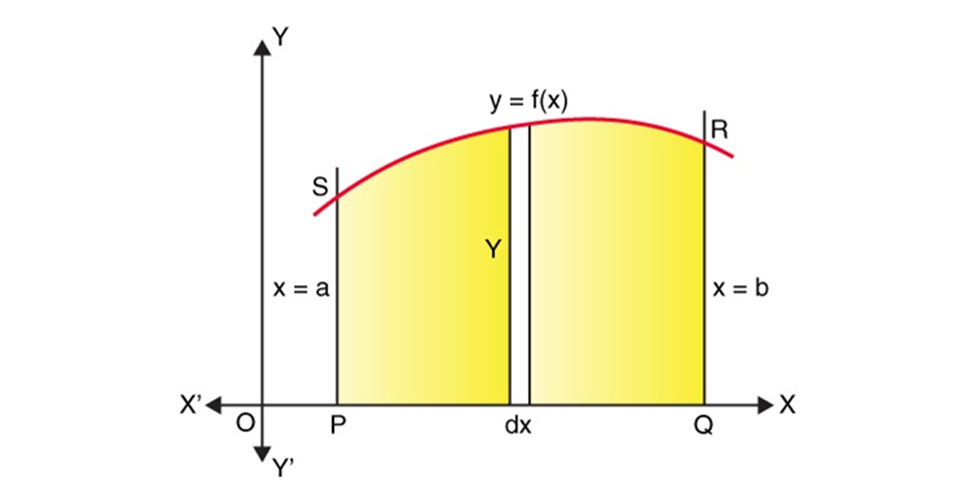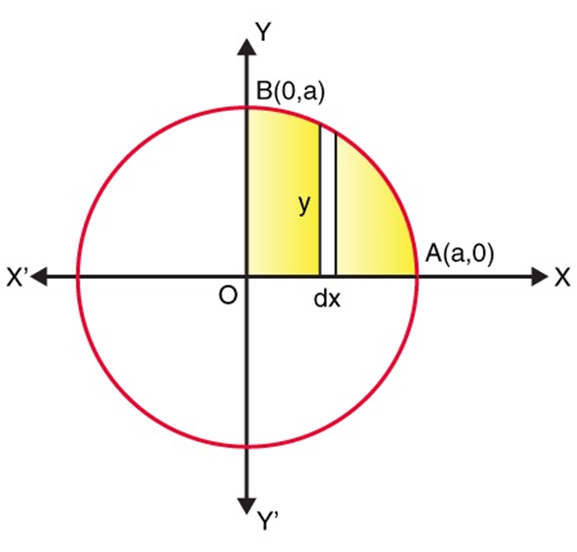- Books Name
- Mathmatics Book Based on NCERT
- Publication
- KRISHNA PUBLICATIONS
- Course
- CBSE Class 12
- Subject
- Mathmatics
Chapter 8
Area under Simple Curves especially lines, circles/ parabolas/ellipses (in standard form
One of the major application of integrals is in determining the area under the curves.
Consider a function y = f(x), then the area is given as

![]()
Consider the two curves having equation of f(x) and g(x), the area between the region a,b of the two curves is given as-
dA = f(x) – g(x)]dx, and the total area A can be taken as- 
Application of Integrals Examples
Example 1:
Determine the area enclosed by the circle x2 + y2 = a2
Solution:
Given, circle equation is x2 + y2 = a2

From the given figure, we can say that the whole area enclosed by the given circle is as
= 4(Area of the region AOBA bounded by the curve, coordinates x=0 and x=a, and the x-axis)
As the circle is symmetric about both x-axis and y-axis, the equation can be written as
= 4 0∫a y dx (By taking the vertical strips) ….(1)
From the given circle equation, y can be written as
y = ±√(a2-x2)
As the region, AOBA lies in the first quadrant of the circle, we can take y as positive, so the value of y becomes √(a2-x2)
Now, substitute y = √(a2-x2) in equation (1), we get
= 4 0∫a √(a2-x2) dx
Integrate the above function, we get
= 4 [(x/2)√(a2-x2) +(a2/2)sin-1(x/a)]0 a
Now, substitute the upper and lower limit, we get
= 4[{(a/2)(0)+(a2/2)sin-1 1}-{0}]
= 4(a2/2)(π/2)
= πa2.
Hence, the area enclosed by the circle x2 +y2 =a2 is πa2.

 KRISHNA PUBLICATIONS
KRISHNA PUBLICATIONS
